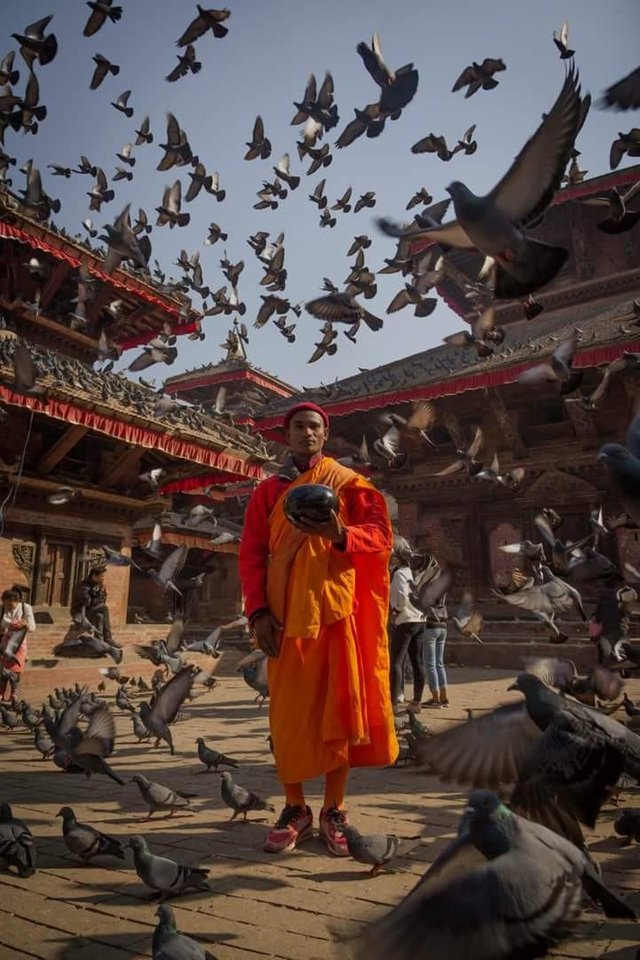Buddhist Monk
 A Buddhist monk alms towards the devotees at Basantapur Durbar Square, Kathmandu, Nepal.
A Buddhist monk alms towards the devotees at Basantapur Durbar Square, Kathmandu, Nepal.
#201Photograpyy
#PhotoWalkersNp
The lives of all Buddhist monastics are governed by a set of rules called the prātimokṣa or pātimokkha.[1] Their lifestyles are shaped to support their spiritual practice: to live a simple and meditative life and attain nirvana.[3]
A person under the age of 20 cannot be ordained as a bhikkhu or bhikkhuni but can be ordained as a śrāmaṇera or śrāmaṇērī.
Definition Edit
Bhikkhu literally means "beggar" or "one who lives by alms".[4] The historical Buddha, Prince Siddhartha, having abandoned a life of pleasure and status, lived as an alms mendicant as part of his śramaṇa lifestyle. Those of his more serious students who abandoned their lives as householders and came to study full-time under his supervision also adopted this lifestyle. These full-time student members of the sangha became the community of ordained monastics who wandered from town to city throughout the year, living off alms and stopping in one place only for the Vassa, the rainy months of the monsoon season.
In the Dhammapada commentary of Buddhaghosa, a bhikkhu is defined as "the person who sees danger (in samsara or cycle of rebirth)" (Pāli: Bhayaṃ ikkhatīti: bhikkhu). He therefore seeks ordination to obtain release from it.[5] The Dhammapada states:[6]
[266-267] He is not a monk just because he lives on others' alms. Not by adopting outward form does one become a true monk. Whoever here (in the Dispensation) lives a holy life, transcending both merit and demerit, and walks with understanding in this world — he is truly called a monk.
For historical reasons, the full ordination of women has been unavailable to Theravada and Vajrayana practitioners, although recently the full ordination for women has been reintroduced to many areas.
Historical terms in Western literature Edit
In English literature before the mid-20th century, Buddhist monks were often referred to by the term bonze, particularly when describing monks from East Asia and French Indochina. This term is derived Portuguese and French from Japanese bonsō, meaning "priest, monk". It is rare in modern literature.[7]
Buddhist monks were once also called talapoy or talapoin from French talapoin, itself from Portuguese talapão, ultimately from Mon tala pōi, meaning "our lord".[8][9]
The Talapoys cannot be engaged in any of the temporal concerns of life; they must not trade or do any kind of manual labour, for the sake of a reward; they are not allowed to insult the earth by digging it. Having no tie, which unites their interests with those of the people, they are ready, at all times, with spiritual arms, to enforce obedience to the will of the sovereign.
— Edmund Roberts, Embassy to the eastern courts of Cochin-China, Siam, and Muscat[10]
The talapoin is a monkey named after Buddhist monks just as the capuchin monkey is named after the Order of Friars Minor Capuchin (who also are the origin of the word cappuccino).